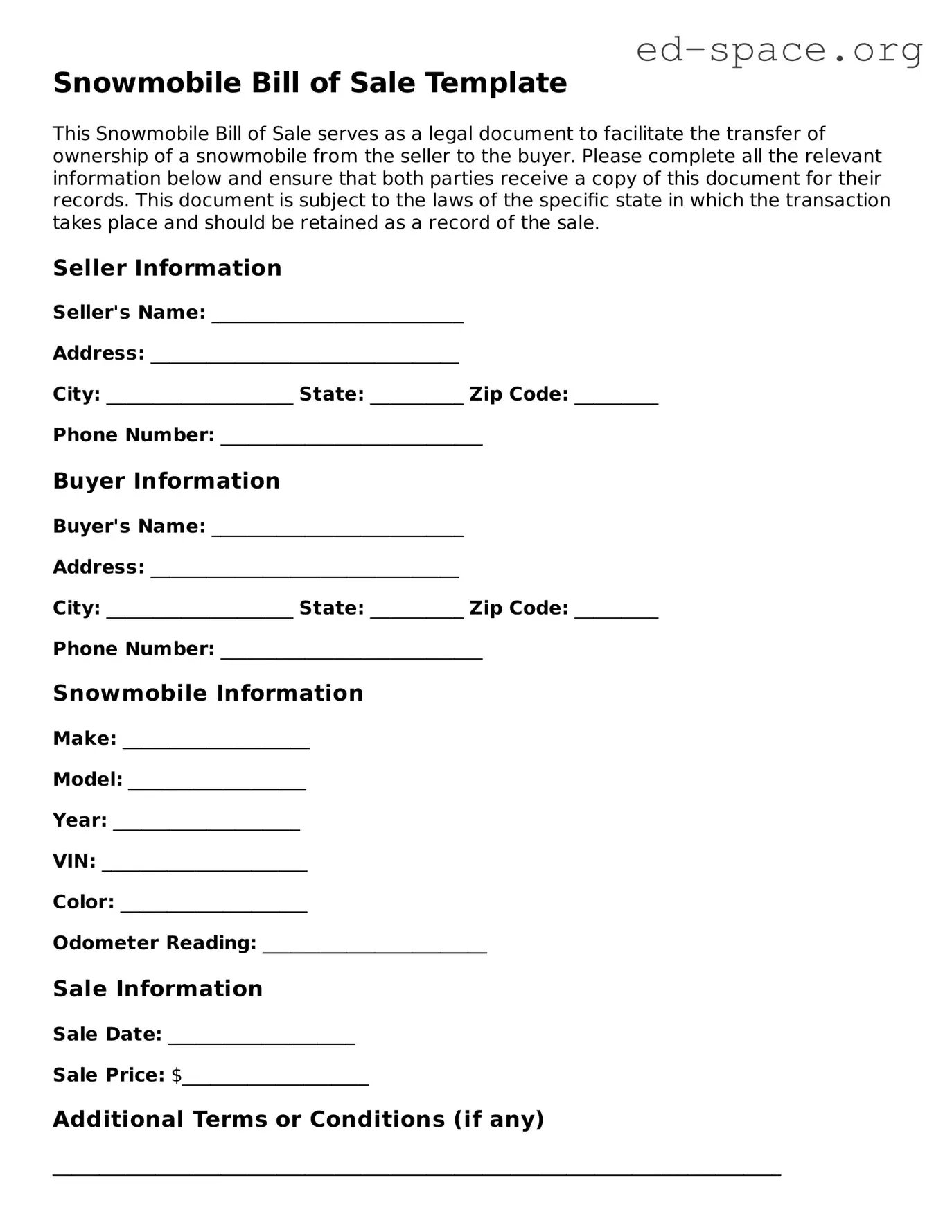Snowmobile Bill of Sale Template
This Snowmobile Bill of Sale serves as a legal document to facilitate the transfer of ownership of a snowmobile from the seller to the buyer. Please complete all the relevant information below and ensure that both parties receive a copy of this document for their records. This document is subject to the laws of the specific state in which the transaction takes place and should be retained as a record of the sale.
Seller Information
Seller's Name: ___________________________
Address: _________________________________
City: ____________________ State: __________ Zip Code: _________
Phone Number: ____________________________
Buyer Information
Buyer's Name: ___________________________
Address: _________________________________
City: ____________________ State: __________ Zip Code: _________
Phone Number: ____________________________
Snowmobile Information
Make: ____________________
Model: ___________________
Year: ____________________
VIN: ______________________
Color: ____________________
Odometer Reading: ________________________
Sale Information
Sale Date: ____________________
Sale Price: $____________________
Additional Terms or Conditions (if any)
______________________________________________________________________________
______________________________________________________________________________
Acknowledgment of Sale
Both the seller and buyer acknowledge the sale of the snowmobile described above for the amount specified. Both parties affirm that the information provided is accurate and complete to the best of their knowledge and that the snowmobile is sold in "as is" condition, with no guarantees or warranties expressed or implied. By signing this document, they agree to the terms and conditions of the sale as outlined above.
Signatures
Seller's Signature: _____________________ Date: ___________
Buyer's Signature: _____________________ Date: ___________
